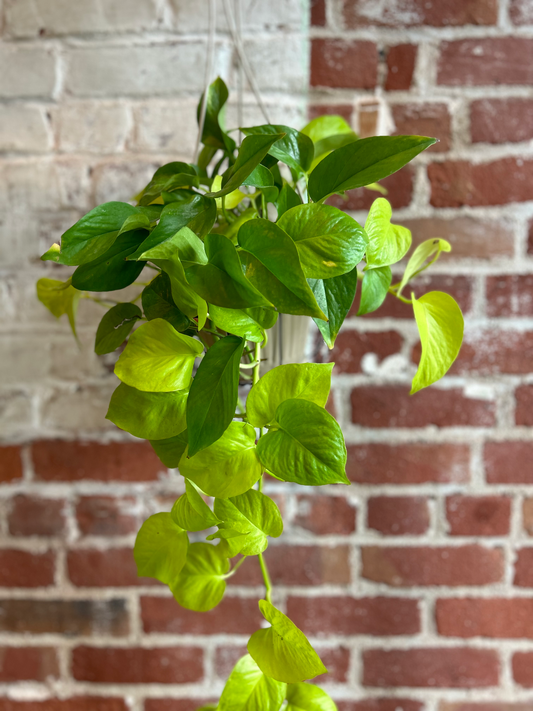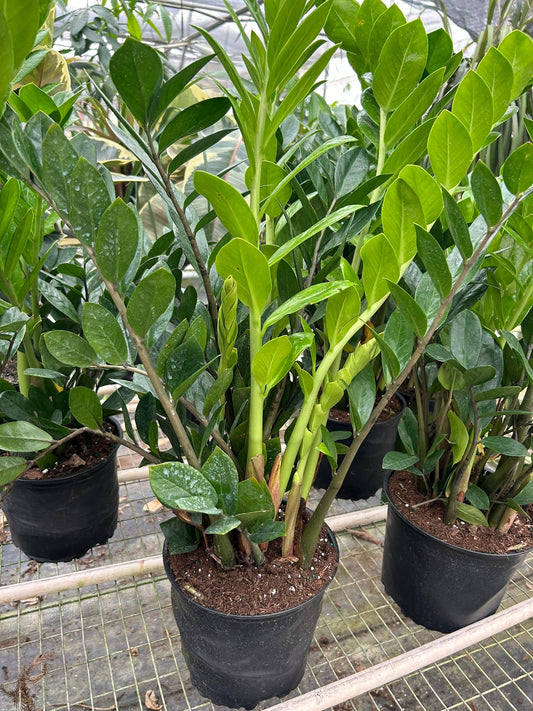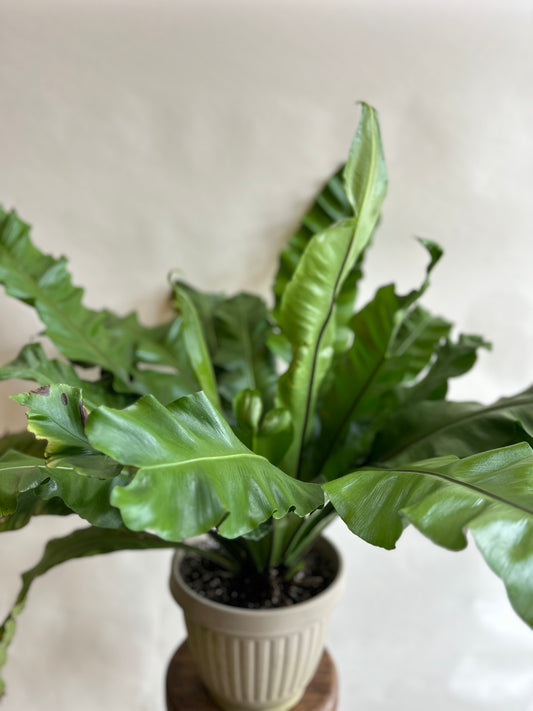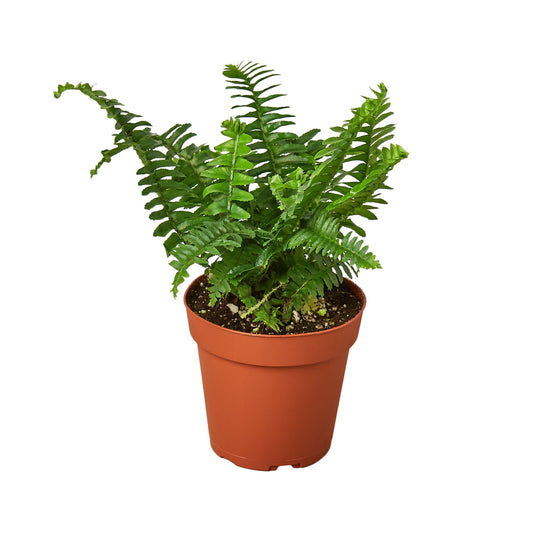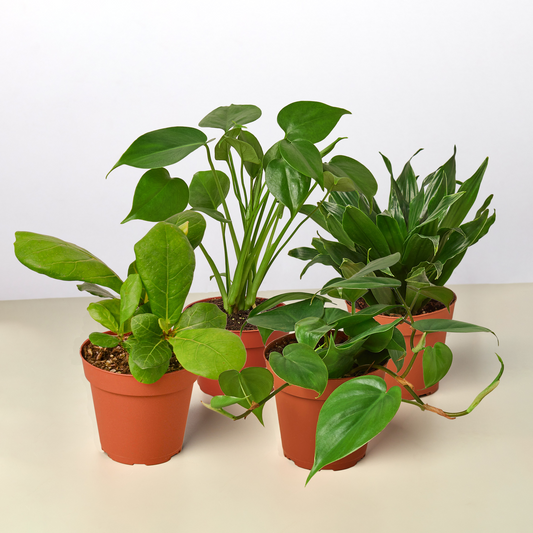How to Repot a Partridge Breast Aloe in 5 Easy Steps
Cafe Planta Team
Repotting your Partridge Breast Aloe doesn’t have to be a daunting chore. Think of it as a little makeover, giving your plant some fresh new digs to spread its roots. Whether you're a seasoned plant parent or just starting out, learning the ins and outs of repotting can make a world of difference in your plant's health.
We're going to walk through five simple steps to help you repot your Partridge Breast Aloe with confidence. From choosing the right pot to understanding the best soil mix, we'll cover all you need to know and more. Let's get started!
Why Repotting Is Important
First off, why should you bother repotting your Partridge Breast Aloe? Plants outgrow their pots over time, just like kids outgrow their shoes. When roots have no room to grow, your plant can become stressed, which isn't good news for anyone! Let's explore why giving your aloe a new home is beneficial.
Repotting helps in a few key areas:
- Growth: A new pot gives roots room to stretch, allowing your plant to grow larger and healthier.
- Fresh Soil: Over time, soil loses its nutrients. Fresh soil means more food for your Partridge Breast Aloe.
- Improved Drainage: A new pot can improve water flow, preventing root rot.
Think of repotting as a spa day for your aloe. It's all about refreshing its environment and giving it a little TLC. Plus, who doesn’t love an excuse to go plant shopping for a cute new pot?
When to Repot Your Partridge Breast Aloe
Timing is everything. So, when's the perfect time to get your hands dirty? Generally, spring is the best season for repotting. Your aloe is waking up from its winter slumber and ready for a growth spurt. It’s kind of like how we all feel after a good cup of coffee in the morning—ready to take on the world!
Here are some signs your Partridge Breast Aloe is ready for a new pot:
- Root Bound: If you see roots growing out of the drainage holes or circling the pot, it's time for a change.
- Stunted Growth: If your aloe isn't growing, even with regular care, it might need more space.
- Yellowing Leaves: This could indicate nutrient deficiency from depleted soil.
While it's not an exact science, keeping an eye on these signs will ensure your plant gets the care it deserves.
Choosing the Right Pot
Picking the perfect pot is like choosing the right outfit for an event. It needs to fit well and look good! But more than aesthetics, the pot you choose can greatly affect your aloe's health.
Here are some tips for selecting the right pot:
- Size: Choose a pot that's about two inches larger in diameter than the current one. Too big, and the soil may stay wet, leading to root rot.
- Material: Terracotta is a great option as it allows for air circulation and helps prevent overwatering. However, ceramic pots with drainage holes work too.
- Drainage: This is non-negotiable. Make sure your pot has drainage holes to let excess water out.
Remember, your aloe isn't just a pretty face; it needs a pot that supports its health and growth. Now that you’ve got the right pot, it’s time to think about soil.
Preparing the Perfect Soil Mix
Now, let's talk dirt! Literally. The type of soil you use can make or break your aloe's health. Partridge Breast Aloes prefer a well-draining soil mix, similar to what you'd use for cacti or succulents.
Here's a simple soil recipe:
- Potting Soil: Use a high-quality potting mix as your base.
- Sand: Add coarse sand to improve drainage.
- Perlite: This helps aerate the soil and prevents compaction.
Mix these ingredients in equal parts, and you’ve got a well-draining mix your Partridge Breast Aloe will love. Remember, the goal is to mimic their natural arid environment, so avoid heavy, water-retentive soils.
Step-by-Step Repotting Process
Alright, it’s time for the main event—repotting your Partridge Breast Aloe! Follow these steps, and you’ll have your aloe settled into its new home in no time.
Step 1: Gather Your Supplies
Start by gathering everything you need:
- A new pot with drainage holes
- Fresh soil mix
- Gardening gloves (optional, but helpful!)
- A small trowel or spoon
- Scissors or pruning shears
Having your supplies handy will make the process smooth and stress-free.
Step 2: Remove the Aloe from Its Current Pot
Gently tip the pot on its side and carefully slide your aloe out. If it’s being stubborn, you might need to tap the sides or run a knife around the edge to loosen it. Be gentle—no one likes to be yanked by their roots!
Step 3: Loosen the Roots
Once out, inspect the roots. If they're tightly bound, gently tease them apart. This encourages them to spread out in their new pot. Trim any dead or rotting roots with your scissors.
Step 4: Position and Fill
Place a layer of soil at the bottom of the new pot. Position your aloe in the center and fill around it with soil, leaving about an inch from the top for watering. Don’t pack the soil too tightly; roots need room to breathe.
Step 5: Water Sparingly
Give your aloe a light watering to settle the soil, but don’t drench it. Remember, less is more when it comes to watering succulents. Allow the soil to dry out completely before watering again.
Caring for Your Aloe After Repotting
Congratulations, your aloe is in its new home! But the care doesn’t stop here. Here’s how to keep your plant thriving post-repotting.
First, avoid direct sunlight for a week or two. Your aloe needs time to adjust to its new environment. After that, you can gradually move it back to its sunny spot.
Watering is crucial—only water when the soil is completely dry. This might mean watering every two to three weeks, depending on your home’s humidity and temperature.
Fertilizing isn’t necessary right after repotting, as fresh soil has nutrients. In a few months, a diluted cactus fertilizer can give it a little boost if needed.
Common Mistakes to Avoid
Even the best of us make mistakes, but let’s try to avoid some common pitfalls in the repotting process.
- Overwatering: This is the number one mistake. Remember, your aloe would rather be too dry than too wet.
- Using the Wrong Soil: Heavy soil retains too much water, which can lead to root rot.
- Skipping the Drainage Holes: Always ensure your pot has holes for excess water to escape.
Keeping these in mind will help ensure your Partridge Breast Aloe stays happy and healthy in its new pot.
Connecting with Your Plant
Repotting isn’t just about the technical steps; it's about taking time to connect with your plant. Notice its leaves, feel the soil, and appreciate the growth journey you’re on together. Plants, much like people, thrive on attention and care.
Take a moment to enjoy the process. It’s a wonderful way to slow down and enjoy nature right in your home. Plus, a thriving plant means a more vibrant, inviting space for you and your guests.
Final Thoughts
Repotting your Partridge Breast Aloe can be a rewarding experience that benefits both you and your plant. By following these steps, you’re setting up your aloe for a happy, healthy future.
At Cafe Planta, we love helping you care for your green friends. Whether you're looking for new plants, care tips, or just some plant-themed apparel, we've got you covered. If you have questions, feel free to email us or drop us a message on Instagram. We believe in the power of plants to connect us with nature and each other, and we're here to support you on your plant journey. Let's grow together!


